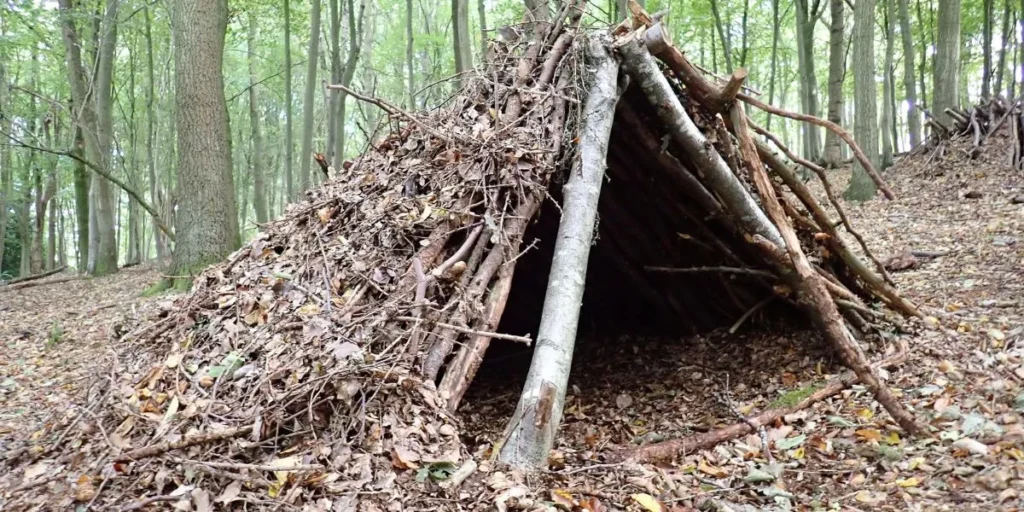
When venturing into the great outdoors, having the skills to build a reliable shelter can be a game-changer. Imagine being able to create a sturdy and secure haven using just the resources around you. From choosing the perfect location to mastering the art of weatherproofing, each step plays a crucial role in ensuring your safety and comfort in the wilderness. So, let’s explore how attention to detail and strategic planning can elevate your shelter-building expertise to a whole new level.
Choosing the Right Location
When setting out to build a shelter, you must carefully select the right location to ensure safety and comfort. The first step is to find a spot that’s elevated and not prone to flooding. Look for high ground that’s away from rivers or streams that could rise during heavy rain. It’s crucial to avoid areas with the potential for landslides or falling debris.
Additionally, consider the direction of the wind. Choose a location where the wind won’t blow directly into your shelter. This will help in maintaining a comfortable temperature inside and prevent smoke from fires blowing back towards you. Being mindful of the wind patterns will make your shelter more pleasant to stay in.
Furthermore, think about proximity to resources. Look for a location close to water sources but not too close that you risk flooding. Access to materials for building and firewood is also essential. By selecting a location strategically, you can enhance your overall shelter-building experience.
Building Materials and Tools
To construct a sturdy shelter, gather suitable building materials and essential tools. Look for sturdy branches, logs, or even large leaves to use as the main structure of your shelter. These materials should be strong enough to withstand various weather conditions. Collect rocks or heavy items to anchor your shelter and prevent it from shifting or collapsing. Additionally, search for materials like vines or paracord to tie everything together securely.
When it comes to tools, a reliable knife is a must-have for cutting branches, shaping wood, and various other tasks. A multi-tool can also come in handy for different purposes. Consider carrying a folding saw for cutting larger pieces of wood efficiently. A lightweight hammer or hatchet can be useful for driving stakes into the ground or splitting wood.
Remember to prioritize safety while gathering materials and using tools. Wear gloves to protect your hands, and be cautious when handling sharp objects. By choosing the right building materials and tools, you’ll be well on your way to constructing a durable shelter for your outdoor adventures.
Shelter Design and Construction
For a successful shelter design and construction, focus on selecting an efficient layout that meets your specific needs and ensures stability and protection. Begin by choosing a suitable location that offers natural protection or easy access to resources. When designing the layout, consider the size of the shelter, the number of occupants it needs to accommodate, and any specific features you require, such as separate sleeping areas or storage space.
Utilize sturdy materials like branches, logs, and leaves to construct the frame and walls of your shelter. Pay attention to the structural integrity of your design to withstand various weather conditions and potential wear over time. Incorporate cross-bracing or reinforcements where necessary to enhance stability.
Remember to prioritize ventilation and natural light in your shelter’s design. Proper airflow helps regulate temperature and reduce condensation, while natural light can improve the overall ambiance and comfort of the space. By focusing on these key aspects, you can create a functional and secure shelter that meets your needs in the wilderness.
Weatherproofing and Insulation
Achieve optimal shelter durability and comfort by implementing effective weatherproofing and insulation techniques. Weatherproofing is crucial for protecting your shelter from the elements. Begin by ensuring there are no leaks or gaps where water could seep in during rain or snow. Use waterproof materials such as tarps, plastic sheets, or waterproof coatings to cover your shelter’s exterior. Additionally, consider adding an overhang or elevated foundation to prevent water from pooling around the base.
Insulation is essential for maintaining a comfortable temperature inside your shelter. Insulating materials like foam boards, blankets, or even natural materials like leaves or hay can help trap heat and keep the interior warm. Focus on insulating the roof, walls, and floor to create a barrier against the cold. Remember to ventilate your shelter properly to prevent condensation buildup, which can lead to dampness and mold.




